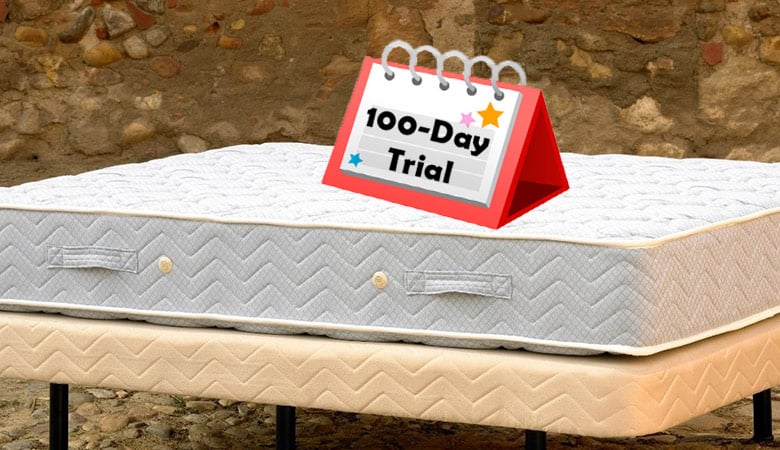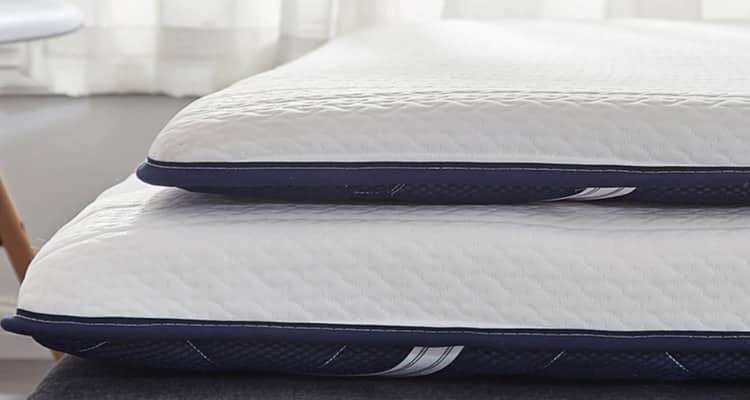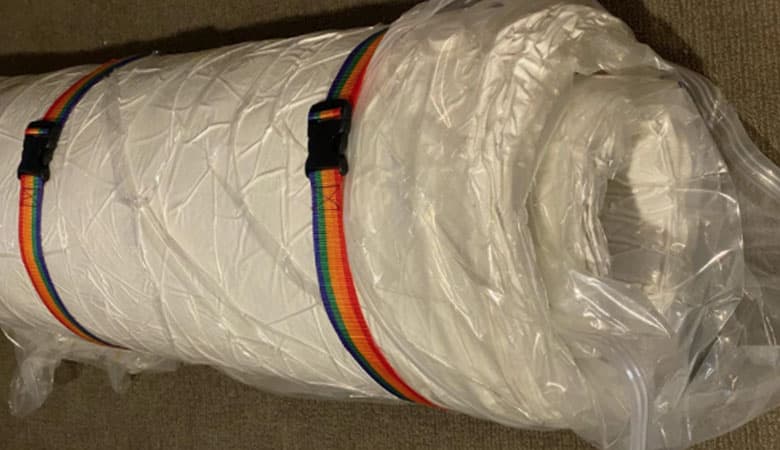You finally bought that memory foam mattress you’ve been wanting.
It’s molding precisely to the exact contours of your body just as you knew it would.
It’s providing exceptional pressure relief no matter how you sleep.
There’s just one thing.
It’s hard. While some sleepers prefer a hard mattress, not everyone does. Moreover, if your mattress is too firm, it could mean waking up with serious aches and pains.
So do memory foam mattresses get softer with time or, are you going to be stuck with a bed that’s too firm? Yes, your memory foam mattress will get softer, and no, you don’t have to be stuck with a bed that’s too firm. This article provides eight ways to make a memory foam mattress softer.
But first, let’s determine how we know the bed is too firm.
How Do You Know If Your Mattress Is Too Firm?

There are some signs that can let you know if your mattress is too firm.
- An overly-firm mattress can put excess strain on your pressure points (shoulders, hips, and torso) or cause spinal misalignment.
- You might also find that your body stays tense as you sleep. That results in muscle, neck, or back pain.
- Sleeping on too firm a mattress could mean your spine and the rest of your body can’t fully decompress.
- A hard mattress could also lead to poor quality sleep because you might toss and turn all night trying to find a comfortable sleep position.
So, if you experience any of these things with your memory foam mattress, the rest of this article is for you.
How To Make Your Memory Foam Bed Softer
It might come as a surprise for some who sleep on a memory foam bed for the first time to discover that it feels very different from a traditional mattress.
Meaning the bed may feel a lot harder than what you’re used to. However, this is normal, so don’t panic.
If it didn’t feel different, that would be strange. The truth is, memory foam beds are not like traditional mattresses. While all new beds require some getting used to, memory foam mattresses especially require a break-in period.
Here are a few tips that might help in breaking in your new mattress a little quicker.
1. Take Advantage of The Trial Period

Most mattress companies will offer a lengthy trial period just for this purpose.
They know it takes more than a few days to determine if the mattress you just purchased is the right one for you. It takes time to break a mattress in.
The longer you use it, the softer it will get. That is because the fibers will begin to adapt to your physical characteristics. The softening will become less noticeable because the foam will start to stabilize.
Check with your seller to see how long the trial period is and take full advantage of it. It will run anywhere from 30 to 100+ days. However long it is, you will most likely need the entire period to determine if it is the right mattress for you.
2. Apply Gentle Pressure
One way to break in your new mattress is to gently apply pressure to the upper surface using your hands, knees, or general bodyweight for about 10 to 30 minutes each day. You can do this in the following ways:
- Pushing – Place the palms of your hands on the mattress and push down gently in the memory foam across the entire surface area of the mattress to encourage the fibers to relax.
- Massaging – Vary the application of the pressure by rolling your palms into the material.
- Kneeling – Kneeling on the trouble spots is a forceful way to encourage the fibers to relax.
- Rolling – Rolling on the memory foam can help to loosen up the fibers.
In applying pressure, be careful to ensure that you are gentle. Being too vigorous could cause pinching, punctures, or indentions in the mattress, which could void the warranty and the sleep trial.
3. Walk On Your Mattress

When you were young you probably heard the following:
“Don’t walk or jump on the bed!”
Well, walking or crawling on your mattress is an easy way to soften it. Every day for several minutes, walk or crawl (barefoot) on your mattress. That will speed up the process of softening it.
4. Rotate or Flip Your Mattress
Rotating your mattress can help it wear more evenly and keep it comfortable for a longer time. Especially if your bed is not new, try rotating and flipping the mattress (if it’s a rotatable, flippable mattress).
Do this about twice a year to promote even wear, which will help your bed stay comfortable longer.
5. Increase the Room Temperature
Heat can help memory foam to expand and soften up, and ambient warmth is effective in helping memory foam mattresses to expand when used in conjunction with the application of pressure.
Localized heat sources such as electric blankets, heating pads, or hot water bottles, are not recommended to be used on memory foam. That is because they can damage the material resulting in deformity or a reduced lifespan of your mattress.
A room temperature of 68 degrees to 72 degrees is recommended.
6. Opt for Breathable Sheets
The amount of softness and conformability you get with a memory foam mattress depends heavily on the amount of heat reaching the sleeping surface.
The type of sheets you use can significantly affect how quickly your mattress breaks in and become more comfortable. It’s best to opt for extremely breathable sheets.
That will maximize the amount of body heat transfer and increase the foam’s chances of molding properly to your body and reaching peak comfort levels.
A good range to aim for is the 350 – 500 thread count range. These sheets offer significant levels of softness and comfort without blocking out too much body heat.
Our favourite breathable sheets are the BAMPURE 100% Organic Bamboo Sheets. They are perfect to use on memory foam mattresses:
You can read more about them over at Amazon here.
7. Use A Mattress Topper

Buying a soft mattress topper and placing it on top of your memory foam mattress can be a quick fix if you want to make it softer.
A mattress topper is a soft, high-conforming spread that you can place on your bed for enhanced comfort. It adds layers between your body and the mattress and will make the bed feel more comfortable.
For this we recommend our own MemorySleep mattress topper. It’s a soft latex and memory foam hybrid that provides outstanding support, elasticity and resilience while simultaneously providing comfortable cushioning and pressure relief.
You can choose between 2 inches or 4 inches thickness depending on your needs and there are sizes available for most common US and around the world sized beds. You can learn more about the MemorySleep mattress topper here.
8. Check Your Mattress Base
A mattress base can impact how firm your mattress feels. If you choose a poor quality base, it can limit the benefits of even the most high-quality mattress.
Placing your mattress on a wooden frame with slats no more than 2 – 3 inches apart can cause your mattress to feel softer when compared to a solid platform base, a metal, or the floor because the small gaps combined with the ‘give’ of the wood can allow for more sinkage.
Slatted frames make for some of the best types of frames to use with a memory foam mattress.
How Long Does it Take Before My Mattress Softens?
Most memory foam mattresses will sufficiently soften to the level of firmness that’s most comfortable to you within 2 to 4 weeks. However, depending on other fast-compressing options you use, it could achieve its optimal comfort level in less time than that. The speed of breaking in the foam varies depending on the brand. Most will soften in less than a month.
The critical element that determines the speed of this process is the density of the mattress. Foam density refers to how much material is in each cubic foot of the bed.
A higher foam density means the tighter structure will unwind slower and take a longer time to reach its full stretchability. On the other hand, the lower the density level, the less time it will break-in.
The break-in period makes a trial period crucial, which is why you want to take full advantage of the trial period.
What If My Mattress Never Softens?

If you’ve tried all of the above and reached the end of your trial period, maybe this isn’t the ideal bed for you. Consider contacting the seller to return the mattress or exchange it.
Many mattress brands offer multiple models with varying material types and firmness levels. You will often fit an alternative from the same brand that matches your firmness preferences more closely.
Most manufacturers will adhere to the warranty and exchange your bed, assuming there has been no damage to the mattress.

